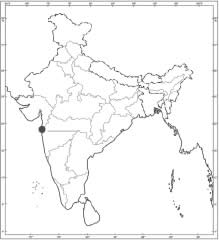CBSE Guess > Papers > Question Papers > Class X > 2008 >Social Science > Social Science - Set - III
Some of the suggestions made to reform the political parties.
(i) Law to regulate the internal affairs of political parties like maintaining a register of its members, to follow its own Constitution, to act as judge in case of party dispute, to hold open elections to the highest post.
(ii) It should be made mandatory for political parties to give one-third tickets to women candidates. Also there should be quota for women on the decision-making bodies of the party.
(iii) There should be State funding of elections. The Government should give money to parties to support their election expenses in kind (petrol, paper, telephone, etc.) or in cash on the basis of votes secured by the party in the previous election.
Q. 26. Explain any four points of importance of secondary sector in the Indian economy. 4×1=4
Ans. Importance of Secondary Sector in the Indian economy:
(i) The Secondary Sector is where industrialisation takes place and a larger part of the national income is earned.
(ii) The mills and factories in the Secondary Sector employ a large workforce part of which is drawn from surplus labour in the Primary Sector, thereby reducing the unemployment in the Primary Sector.
(iii) The Secondary Sector produces a relatively large amount of consumer goods that are used by people living both in towns and villages.
(iv) The Secondary Sector is the main engine of modernisation which, infact, has built up the Tertiary or Services Sector.
Q. 27. What is currency? Explain any three features of modern Indian currency. 1+3=4
Ans. Money in the form of currency is used as a medium of exchange in transactions. Currency has different forms—paper notes and coins, cheques or drafts. In earlier times when paper notes and coins were not introduced, a variety of objects were used as money, such as grains, cattle, woven cloth, agricultural instruments etc.
Three main features of modern Indian currency:
(i) It is used in the form of paper notes and coins.
(ii) The modern currency has no use of its own as it is not made up of any precious metals but is accepted as a medium of exchange because it is authorised by the Government of the country.
(iii) As the law legalises the use of rupee as the medium of payment, it cannot be refused in settling transactions anywhere in India.
Q. 28. Describe four major sources of credit for rural households in India. 4×1=4
Ans. Sources of credit for rural households:
(i) Money lenders are the most dominant amongst sources of credit for rural households. They constitute an informal source of credit. They charge a very high rate of interest on loans as they do not require any collateral.
(ii) Cooperative Societies are another major source of rural credit. They are a source of formal sector credit. Members of a Cooperative, pool their resources for helping one another, e.g., Farmers’ Cooperatives, Weavers’ Cooperatives etc. They offer cheap credit in rural areas for their members. Once these loans are repaid, another round of loan is offered.
(iii) Agricultural traders, relatives and friends are other informal sources of rural credit. Some farmers borrow from agricultural traders who supply the farm inputs (such as seeds, fertilizers, pesticides, etc.) on credit at the beginning of the cropping season and repay the loans after the harvest.
(iv) Commercial banks also give loans to rural households. However, not many rural households borrow from banks as they require proper documentation and collateral.
Q. 29. (29.1) On the given political outline map of India, identify the large scale industrial region of India (1931) and write its correct name on the line drawn.
(29.2) On the same map of India, locate and label the place Chauri-Chaura. 1+1=2

| Social Science 2008 Question Papers Class X | |||||||
| Delhi | Outside Delhi | Compartment Delhi | Compartment Outside Delhi | ||||
| All Sets(PDF) | Set 1 | Set 1 | |||||
| Set 2 | Set 2 | ||||||
| Set 3 | Set 3 | ||||||